What is a Total Knee Replacement?
A total knee replacement (TKR) is a successful surgical procedure that can eliminate knee pain and restore mobility in patients suffering from osteoarthritis and degenerative joint disease. It involves removing the damaged bone and cartilage. The surgeon removes damaged bone from your femoral (thighbone) and tibial (shinbone) surfaces, replacing them with properly positioned and sized implants.
During a traditional knee replacement, your surgeon relies on manual techniques to accurately angle bone cuts and select and position implants.
Manual techniques include:
• Professional judgement to assess the “feel” of the joint
• Expert eyes to gauge the position of the component.
Patients ask me all the time, what is the best technology for a total knee replacement.
In my opinion, it’s the Intellijoint KNEE system. Intellijoint KNEE® is a surgeon-controlled, smart navigation tool for total knee replacements (TKR). It provides real-time measurements during surgery to ensure bone cuts are accurate and the implants are well-positioned to achieve optimal joint alignment.
Custom Knee Replacement Using Intellijoint Navigation Procedure
When determining which is the best knee replacement option for you, there are many factors to consider. You should consider numerous options before deciding to move forward with a knee replacement. If you do require a total knee replacement because more than one part of the knee is worn out, it is strongly recommended that you take advantage of the optimal technology available in 2023 which is Intellijoint online computer navigated total knee replacement surgery.
Up until now, a small but significant percentage of total knee replacement patients have been unhappy with their surgery because the new knee “hurts”, is “too tight”, is “too loose”, or just “doesn’t feel right”. Intellijoint total knee replacement technology is now being shown to improve on these problems and provide a better chance for a patient to have a perfect result. The question is what is a “perfect result”? To Dr. Likover it is a knee that works great and feels great. This means that the knee obtains a full range of motion (bends and straightens all the way) and feels good with no pain or instability. In short, a perfect result feels like a natural, normal knee; this is Dr. Likover’s goal for each patient. Watch the video below or click here to see Dr. Likover demonstrating intellijoint knee surgery.
See Dr. Likover Explain Intellijoint Surgery to Both Patients and Surgeons in the Video Below
Best Implant for Intellijoint?
Patients call and email all the time about which brand of implant we use or which is the best implant for them. In Dr. Likover’s opinion this is due to the direct advertising various brands of knee implants to the public by the various manufacturers. In the United States there are five major companies that compete and several smaller ones. The major four companies are Depuy, Smith and Nephew, Stryker, and Zimmer-Biomet in alphabetical order. The truth is that all of the top of the line implants of these companies are about the same. The differences between the design and materials used in these competitors’ implants are minimal. What makes the difference in how well a total knee replacement surgery performs, is how well the implant is placed into the knee, not which brand of implant is used. The patient should be shopping for the best surgical technique, and not try to pick a brand of implant for his or her case. The patient needs to understand that the motion of the knee is very complex as the knee bends, the lower leg rotates internally. The knee is not a simple hinge joint. Intellijoint total knee replacement technology is aimed at implanting the new knee into the correct position in the body so that the complex motion of the human knee is retained. The technique of surgery (how good is the surgeon and what technique of implement does he or she use?), in the position of the implanted knee in the patient is what counts NOT which brand of knee is used.
Most surgeons use mechanical, standard external knee guides. With a standard designed knee replacement, the surgeon designs the implantation at surgery as he is going along during the procedure.

How Does Intellijoint KNEE Help?
With Intellijoint KNEE, your surgeon has accurate and up-to-date information on bone cuts and implant positioning. This enhances your TKR outcomes. This is done by showing your surgeon accurate positional measurements of the tools used to guide the removal of the diseased bone and create the right angles for your new implants.
Intellijoint KNEE can be used in a primary TKR and with any surgical approach recommended by your surgeon.
Navigation can optimize implant alignment and help prevent complications like:
• Instability
• Implant loosening
• Limited range of motion (stiffness)
• Readmission
• Revision
Additional patient benefits of Intellijoint KNEE can include:
• No additional imaging is required before surgery reducing your exposure to radiation with a CAT scan.
• Less invasive procedure, reducing blood loss by up to 30% in computer-assisted cases when compared to traditional TKR4; that’s about 7% of your body’s volume of blood.
Intellijoint navigation aligns the center of the knee exactly through the center of the hip and ankle so there is perfect alignment of the lower extremity.
The Intellijoint navigation procedure begins by placing a metal pin in the femoral portion of the knee. The surgeon then moves the knee in all directions and the exact center of the hip joint is identified. The Intellijoint cutting guide is then applied to the femoral portion of the knee and checked to make sure the knee is aligned correctly and the cuts are made.
The surgeon then places a metal pin the bone of the tibia and exact center of the ankle is identified.
The surgeon then uses the guide with the camera and computer providing real time measurements and cuts the upper tibia. The ultimate result is that the femur and tibial cuts are perfectly aligned with the hip and ankle center.
I am asked about robots all the time. Robots use a CAT scan done before the surgery to plan the installation of the total knee. The robot then cuts the ones to match the CAT scan planning. The CAT scan is done in the weeks before the surgery. The result of the cuts is manually checked by the surgeon with the use of a probe that senses where the bone cuts have been made. There is a cost for a CAT scan and a substantial cost for the use of the robot during surgery.
Intellijoint navigation requires no CAT scan and does not require the use of a robot to make the bone cuts precisely. The surgeon makes the cuts and the precision of the cuts of the bone are instantly checked by computer. The ultimate goal of alignment of the Intellijoint navigation procedure and a robotic procedure such a Mako, is the same, alignment of the knee through the hip and ankle.
Below is a photo of a laptop computer page that shows the final result of how the surgeon is aligning the knee in all planes. The Intellijoint computer is used to align both the femoral implant and tibial implant relative to the center of the hip and center of the ankle.
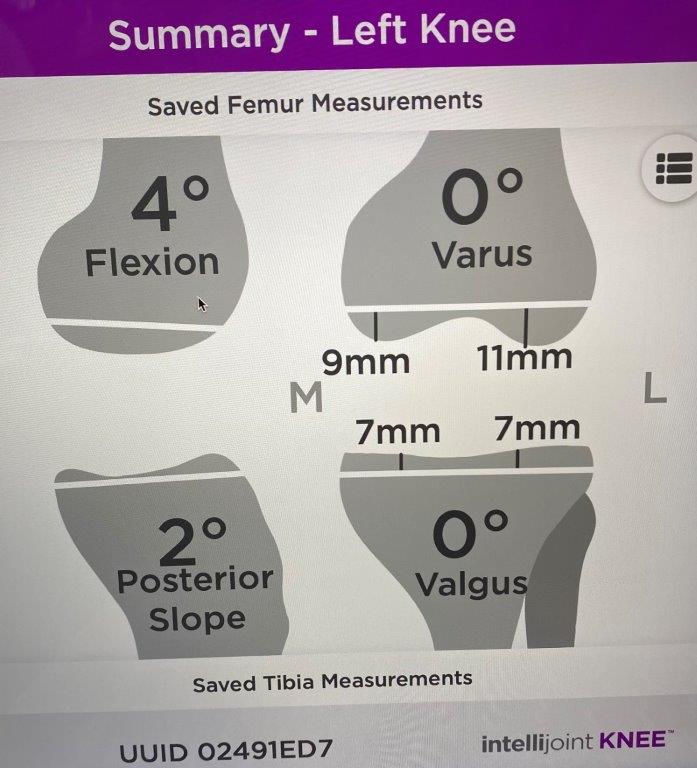
Intellijoint Can Shorten Total Knee Replacement Recovery Time
Intellijoint knee replacement technology shortens the operating time, which reduces the chance of infection and other systemic complications. The patient’s recovery to normal function is enhanced because the knee is placed in the correct position for the patient to easily recover range of motion without struggling. Instead of taking three to six months or even a year to recover from a total replacement, it now appears possible for some patients to return to normal daily activity in as little as six weeks with much greater satisfaction about the surgery.
Two of the more common questions asked are: 1. How long will a total knee replacement last? And, 2. How young is too young for the procedure? The answers now being given are twenty to forty years for a cemented total knee to last. If the cement fails or the polyethylene in the implant wears out, it can be revised and replaced with a second surgery. It is not a big problem for this to be done. In younger patients, less than age 60, Dr. Likover is now doing a porous bone in-growth tibial plate. This implant does not use cement has the potential to last a lifetime because it is a living fixation construct and should not come loose due to fatigue of cement. Dr. Likover is now doing osteoarthritis patients down to age 45 and younger patients with rheumatoid arthritis or other severe arthritis diseases.
In summary, Intellijoint knee patients have reported:
- Greater range of motion, immediately after surgery and throughout recovery
- Better flexion to allow for more natural kneeling
- Quicker return to every day activity (driving, shopping, golfing)
- Shorter operative time, which reduces time under anesthesia
- Less post-operative pain
Total Knee Replacement Case Studies
Hover above the images below to see actual surgical photographs of what arthritis looks like and what an installed total knee looks like. WARNING DO NOT HOVER IF YOU DON’T WANT TO SEE INSIDE THE HUMAN BODY.
See an extreme case of advanced and neglected osteoarthritis of the knee that Dr. Likover has treated in the video below:
Bone on bone inside of knee:
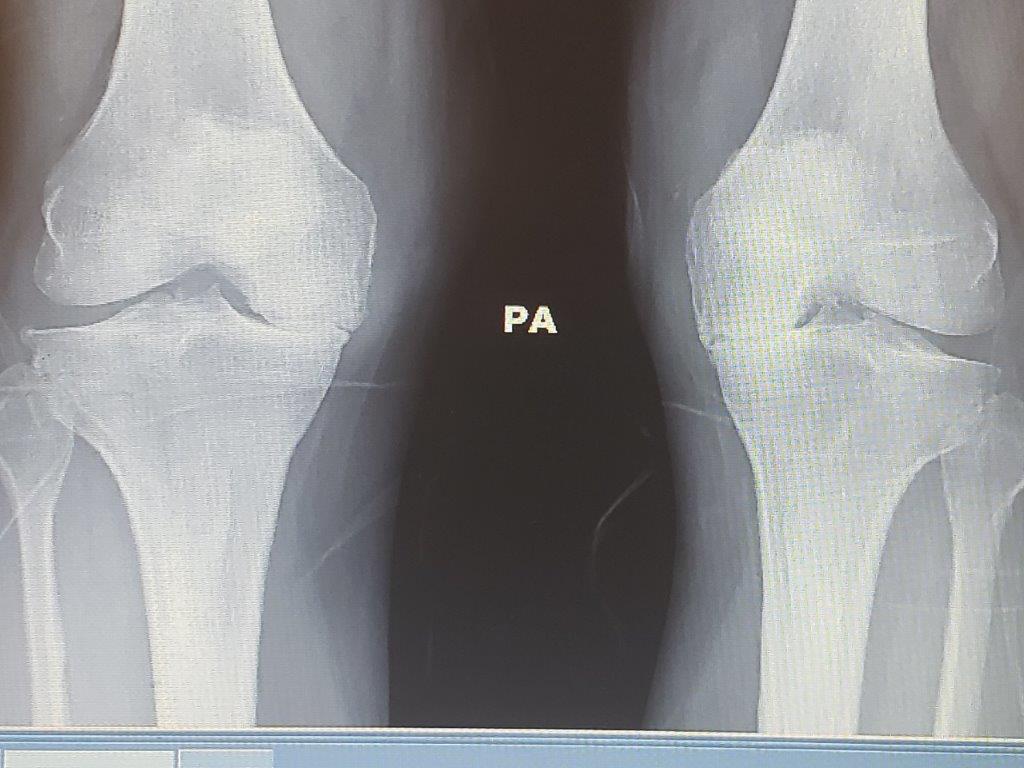
This is what bone on bone looks like inside the knee:
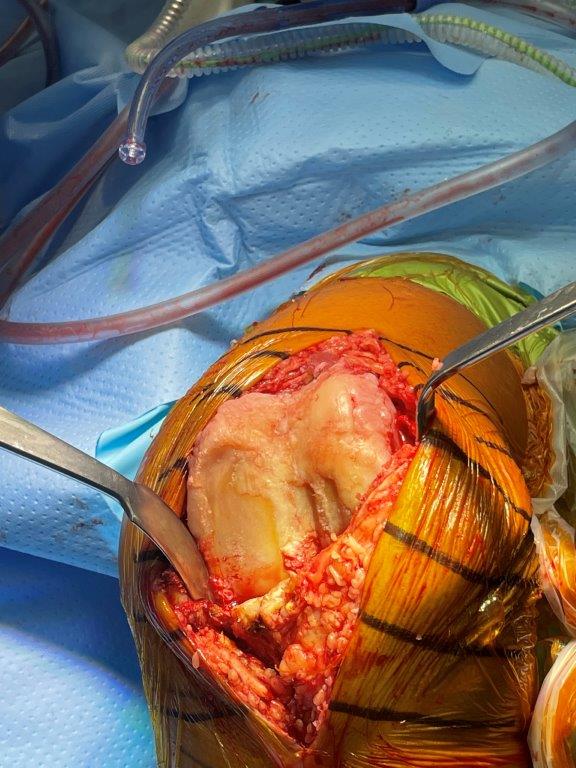
Total knee replacement in place:
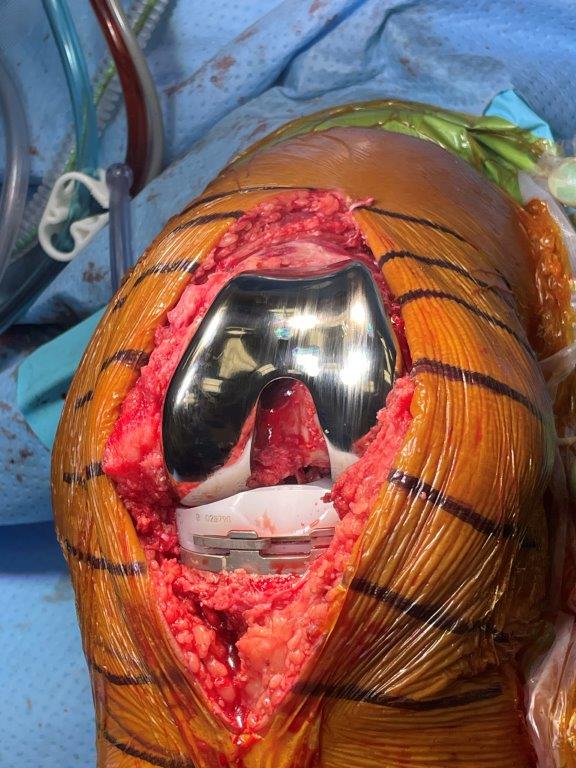
The new concept in knee joint replacement is to replace only the worn out part of the knee and perform a total replacement only when absolutely necessary. If only the kneecap joint (patellofemoral joint) is worn out, only the kneecap joint needs to be replaced. If only the inside of the knee is worn out, then only that portion of the knee needs to be replaced with an Oxford knee replacement. If more than one part is worn out, that is the only time to replace the whole knee with a total knee replacement.
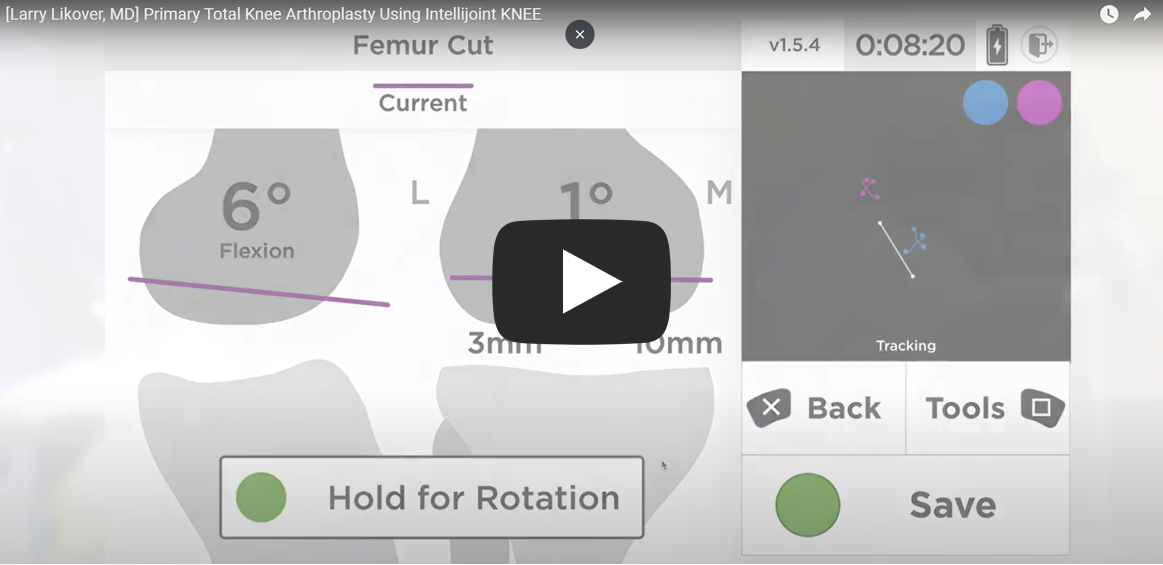
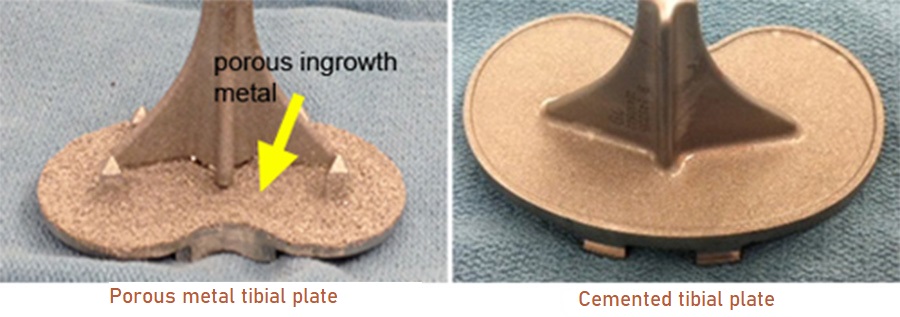
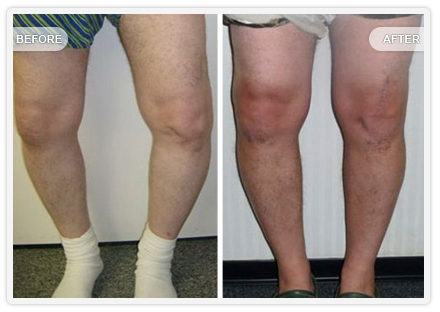
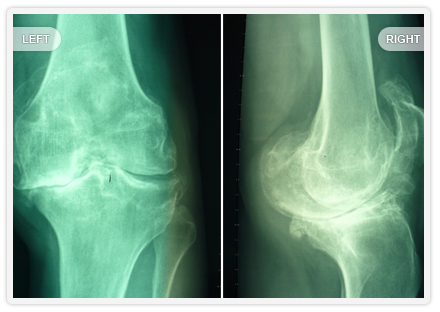


 Dr. Larry Likover has been practicing orthopedics on the west side of Houston for 43 years, treating knee, hip, shoulder, and back problems. Dr. Likover is board certified in orthopedic surgery and provides knee replacement in Houston for patients worldwide.
Dr. Larry Likover has been practicing orthopedics on the west side of Houston for 43 years, treating knee, hip, shoulder, and back problems. Dr. Likover is board certified in orthopedic surgery and provides knee replacement in Houston for patients worldwide.